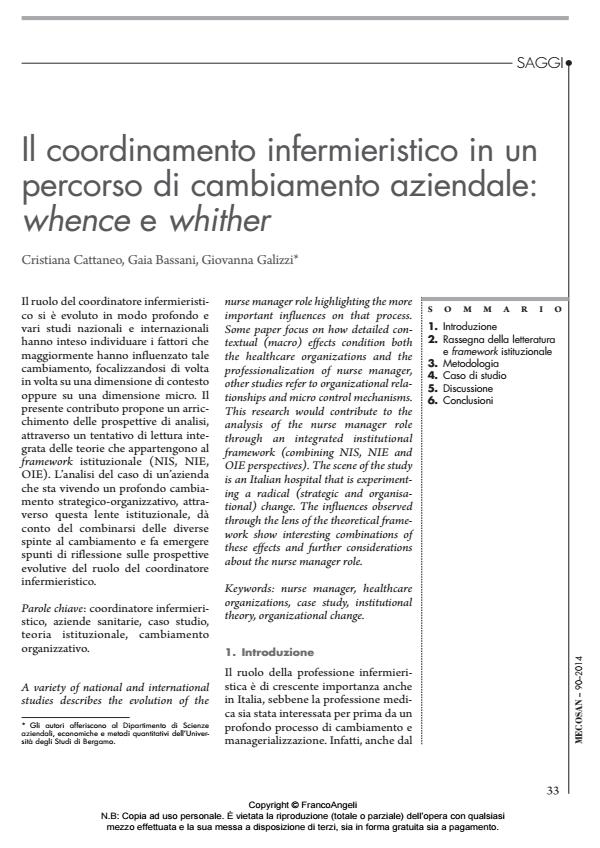Il coordinamento infermieristico in un percorso di cambiamento aziendale: whence e whither
Journal title MECOSAN
Author/s Cristiana Cattaneo, Gaia Bassani, Giovanna Galizzi
Publishing Year 2014 Issue 2014/90
Language Italian Pages 22 P. 33-54 File size 394 KB
DOI 10.3280/MESA2014-090003
DOI is like a bar code for intellectual property: to have more infomation
click here
Below, you can see the article first page
If you want to buy this article in PDF format, you can do it, following the instructions to buy download credits

FrancoAngeli is member of Publishers International Linking Association, Inc (PILA), a not-for-profit association which run the CrossRef service enabling links to and from online scholarly content.
A variety of national and international studies describes the evolution of the nurse manager role highlighting the more important influences on that process. Some paper focus on how detailed contextual (macro) effects condition both the healthcare organizations and the professionalization of nurse manager, other studies refer to organizational relationships and micro control mechanisms. This research would contribute to the analysis of the nurse manager role through an integrated institutional framework (combining NIS, NIE and OIE perspectives). The scene of the study is an Italian hospital that is experimenting a radical (strategic and organisational) change. The influences observed through the lens of the theoretical framework show interesting combinations of these effects and further considerations about the nurse manager role.
Keywords: Nurse manager, healthcare organizations, case study, institutional theory, organizational change.
Cristiana Cattaneo, Gaia Bassani, Giovanna Galizzi, Il coordinamento infermieristico in un percorso di cambiamento aziendale: whence e whither in "MECOSAN" 90/2014, pp 33-54, DOI: 10.3280/MESA2014-090003